Roller Rack Systems
Today's warehouses are expected to do it all: carry huge quantities of inventory and maintain exceptional efficiency. These expectations may seem impossible to meet, especially if worker safety and satisfaction are priorities.
Thankfully, a variety of strategic solutions promise to meet the evolving demands of high-level warehouses and distribution centers, where flexibility is a necessity.
Few warehousing solutions are as versatile or efficient as roller racking systems. Using the simple concepts of rollers and gravity to great effect, these solutions promise to address many of the challenges that have plagued enterprises in recent years. With these solutions, how they're implemented often matters more than which types of roller racks are used. Our experts at Warehouse1 can ensure that these systems are integrated properly.
Still deciding if this solution is right for your facility? Below, we'll explain how these systems work, why they're so popular, and what they can accomplish for your facility.
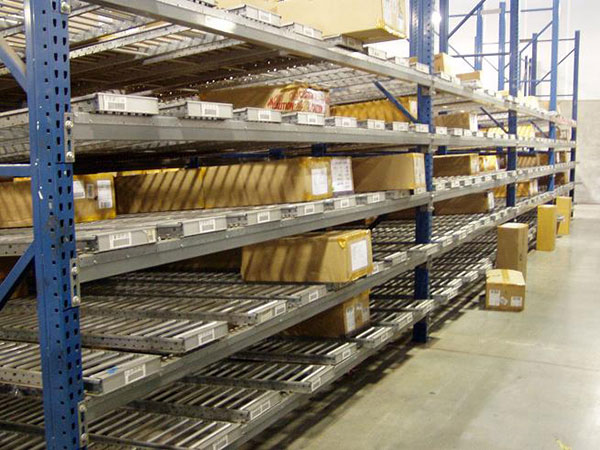
How Can We Help?
What Is a Roller Rack?
Often referred to as gravity flow racks, roller racks represent an important category of pallet racking. These storage systems use a powerful combination of rollers and sloped surfaces to get a boost from gravity.
Under most roller setups, materials are introduced on one side before making their way through a strategically designed system and emerging on the other end. They can have multiple levels of lanes, depending on the specific needs of the facility in question.
Roller racks are best distinguished by their emphasis on first-in, first-out (FIFO), in which the oldest inventory leaves the warehouse first.
While the possible configurations for roller racks may seem endless at first glance, these systems typically fall into one of a few main categories, as described below:
Carton flow
Featuring rolling tracks that harness the power of gravity, carton flow racks push products forward so they can be picked from the front. Their sloped shelves improve visibility while also allowing for high volumes and better ergonomics for workers. As items are picked, additional items take their place. These racking systems are typically modular, so they can accommodate a diverse array of products.
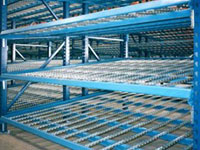
Pallet flow
Again, gravity is a central component of the pallet flow setup. This approach is best known for its high volume, as depths of over ten pallets are possible. Despite this, pallet accessibility remains exceptional.
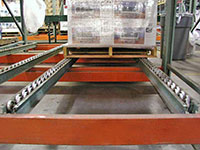
Span track
Designed to convert static racking systems into dynamic solutions, span tracks are ideal for facilities that already have extensive racking installed. This is a uniquely flexible solution that provides excellent flow while making full use of existing rack capacity.
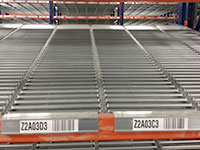
Flow track
Today's flow track solutions are uniquely versatile. Another excellent option for high-density facilities, flow tracks use rollers to move many types of inventory. They also utilize gravity to promote effective FIFO-based storage and retrieval for cartons and boxes.
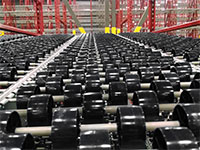
Benefits of Roller Racks
Roller racks aren't ideal in every situation, but they're certainly among the most compelling rack solutions. Their main advantages lie in their status as dynamic systems, in which stocking and picking initiatives are separated. This limits interference between core operations, while keeping racking solutions as organized and efficient as possible.
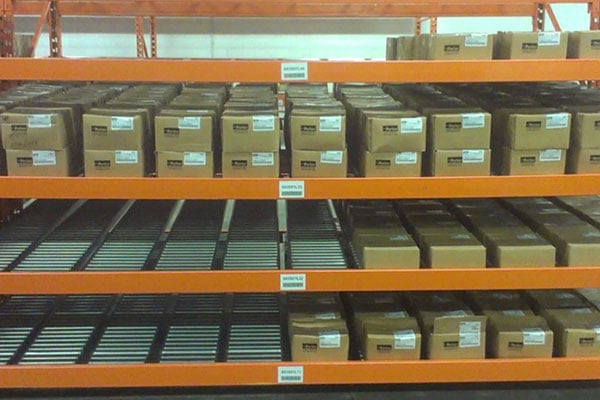
Specific benefits worth noting include:
- Increased efficiency. Through the use of gravity, roller racks are able to move products more efficiently than many other types of pallet racking systems. This benefit remains even when high storage capacity or numbers of SKUs are required. The strong visibility of this system enables excellent pick rates.
- Impressive oversight. The best roller racking systems make items easily visible, so specific types of products (and their quantities) can be tracked. This ensures swift insight into potential inventory concerns, such as shortages.
- Integration with other pallet solutions. These systems work wonderfully alongside many common warehouse setups, including static pallet racks. There's no need to rely on roller systems exclusively; they can be implemented on an as-needed basis alongside conveyors and even mezzanines.
- Adjustability. Layout adjustments are inevitable in today's fast-changing market. Roller racks enhance agility, as they can be implemented in several types of facilities and adjusted over time as required. They can also be used alongside other storage solutions, making it possible to mix and match with ease.
- Defined work zones. The very structure of a roller rack setup provides a clear separation from where items are delivered and where they are retrieved. This, in turn, creates clearly defined work zones, which can be beneficial when designing an efficient and easy-to-navigate layout.
- Worker safety. These systems tend to be more ergonomically friendly than other solutions, so they limit strain on hardworking pickers and other employees.
- Durability. The ideal racking solution will stand the test of time, even if used heavily or adjusted on a regular basis. Heavy-duty roller racks are up to the task.
- Easily replenish inventory. If your facility relies on FIFO warehouse management procedures, there are few solutions better capable of meeting these demands than roller racks. These can dramatically improve access to necessary pallets so that inventory is replaced quickly and efficiently.
Use Cases: Where Are Roller Racks Most Beneficial?
Roller racks can be used in many types of operations. As we've discussed, they most frequently facilitate FIFO solutions. Common applications include:
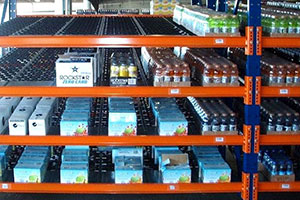 Food and beverage storage. The inherent adaptability of these systems means that they are uniquely valuable for storing many types of food and beverage products. These systems are excellent for storing non-perishable items but are even more impactful when items have varying expiration dates.
Food and beverage storage. The inherent adaptability of these systems means that they are uniquely valuable for storing many types of food and beverage products. These systems are excellent for storing non-perishable items but are even more impactful when items have varying expiration dates.- Office storage. If your business has extensive archival needs, you stand to benefit from a high-density storage solution that keeps your most important documents secure and accessible. Roller racks are ideal for this purpose, as they allow for extensive office storage while also making it easy to retrieve date-sensitive items when required.
- Distribution centers. Blending high volumes with efficient and flexible operations, roller racks are among the most impactful storage solutions for today's distribution centers. Carton flows, in particular, are well-suited to this setup, as frequent seasonal changes may prompt flexible arrangements that accommodate an ever-changing array of products.
- Retail. Efficient merchandise stocking is always the goal in retail, especially as so many businesses simultaneously deal with limited space and high SKUs. Roller racks ensure that items can be stored at a high volume both within retail locations and in overflow storage.
Warehouse1’s Roller Racking Systems
On the hunt for a warehouse storage solution that maximizes volume, efficiency, and agility? Roller racks could play a huge role in your facility. To optimize pallet flow racking systems, you'll need a dedicated team with a strong background in all aspects of warehouse management.
Whether you're looking to implement this system or another pallet racking solution, you'll love working with the experts at Warehouse1. Our team can help you select a solution that fits your unique needs. We'll provide valuable guidance and insight as you determine which types of roller racks are best suited to your warehouse or distribution center.
Ready to get started? Reach out today to learn more about our rack structures and shelving systems — and the role that our strategic approach to material handling could play in your facility.